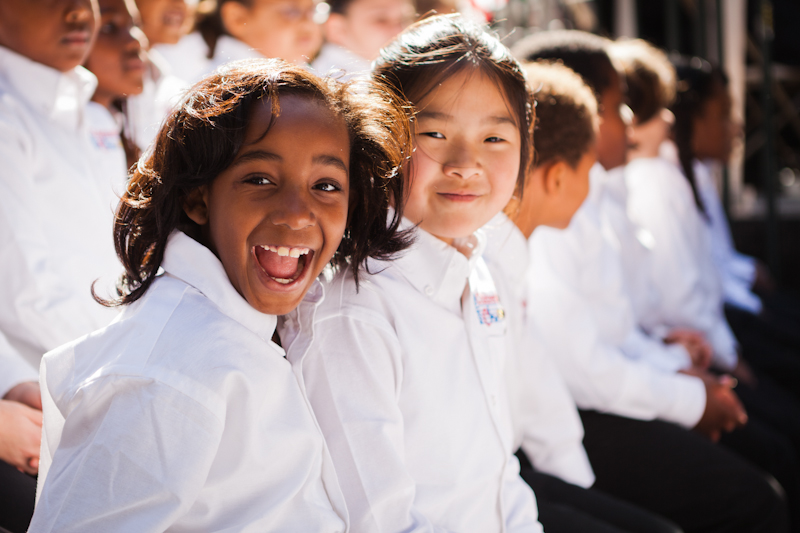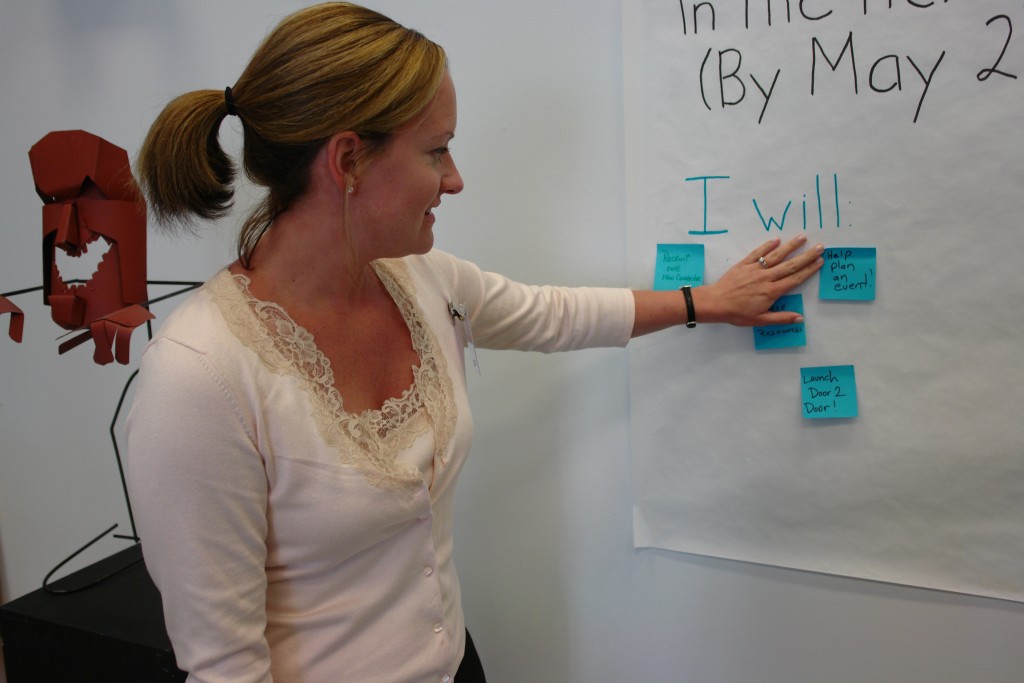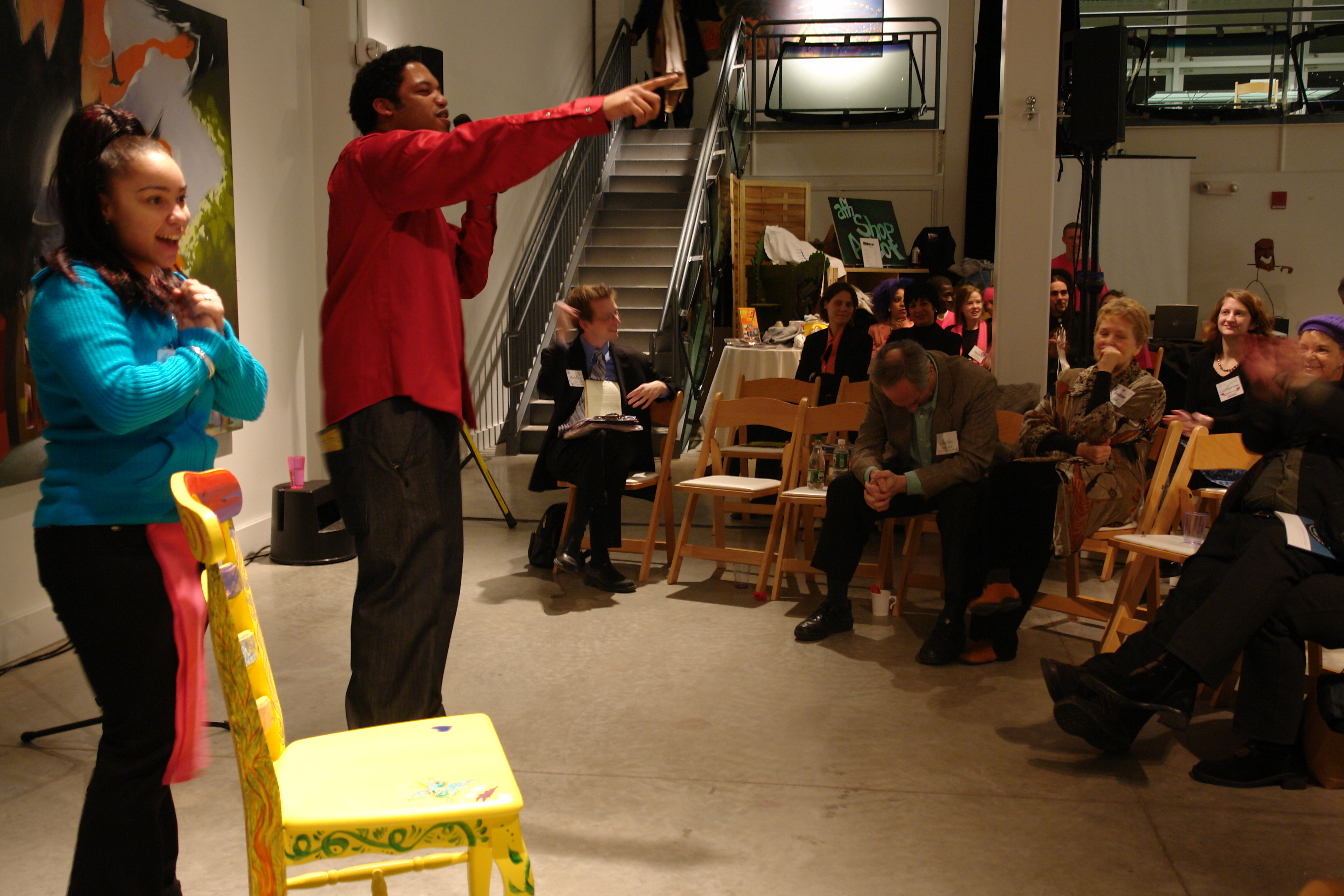
ARTWorks for Kids created a coalition with the intention of bringing together a wide variety of youth arts organizations. Thirty were selected, based on the following criteria:
- Artistic discipline(s): All were welcome: dance, theater, poets, playwrights, spoken word, music (instrumental and vocal), visual arts, photography, film.
- Geographic focus: ARTWorks would limit its grantmaking to low-income communities in eastern Massachusetts.
- Age of participants: Programs with participants age 18 or younger were the focus. Programs that served older participants, up to age 21, were considered as long as they also served teens under age 18.
- In-school vs. out-of-school: ARTWorks would fund both in-school and out-of-school programs.
- Program outcomes: The intent was to engage organizations with a variety of approaches, from using arts to foster academic success, as a form of therapy, to a youth empowerment tool. The aim was to create a strong and diverse coalition.
- Program intensity: ARTWorks considered a broad range of engagement levels, from programs that simply expose kids to an art form (e.g., through a one-time concert or museum visit), to those that provide regular, sequential arts instruction. Pre-professional programs whose intent was formal training were not considered.
The ARTWorks coalition officially launched in June 2004 at a salon-style gathering hosted by Ambassador Swanee Hunt and her late husband, Maestro Charles Ansbacher, that featured guest speaker Bill Strickland. The coalition’s original goal was to advocate for increased public funding for the arts. At that time, however, the research showed that political and economic conditions were not right for such a major push, so the coalition decided to focus instead on building the capacity of member organizations to identify and engage major donors.

Initial research showed:
- Individual donors constituted the largest single sector of arts program support.
- Despite the above, individual giving was still relatively untapped and had great potential for future growth.
- Government, foundation, and corporate sources of funding were not expected to grow in the near future.
- Individuals represented a more stable source of long-term support, not as subject to cyclical shifts in giving levels and priority areas as foundations and government funding programs.
- Individual donors often served as executives and trustees and could facilitate access to other private sources of funding, including corporations and foundations.
The coalition hoped that when its work turned to advocacy for public funding of youth arts programs, these individual donors would leverage their social capital and connections to policymakers.
The first coalition retreat, “Developing Sustainable Support for Youth Arts Organizations,” was held in September 2004 and featured:
- Workshops on major donor cultivation
- A panel discussion with several major donors to local youth arts programs
- The creation of a framework for building a major donor base:
- Research potential donors
- Cultivate relationships with them
- Connect these donors to coalition members
- Assist coalition organizations as they follow up with potential donors
- Advocate for incentives, e.g., legislation that provides tax credits for first-time charitable donations to nonprofits.
In February 2005, the coalition refined its focus to three areas and formed working groups around each:
- Strengthening organization infrastructure and capacity to reach out to and engage major donors.
- Developing a collaborative marketing strategy.
- Organizing special events, from intimate salons and dinner parties to larger showcases.
At the coalition retreat in June 2005, members worked to finalize strategies and increase their capacity for messaging and marketing.
